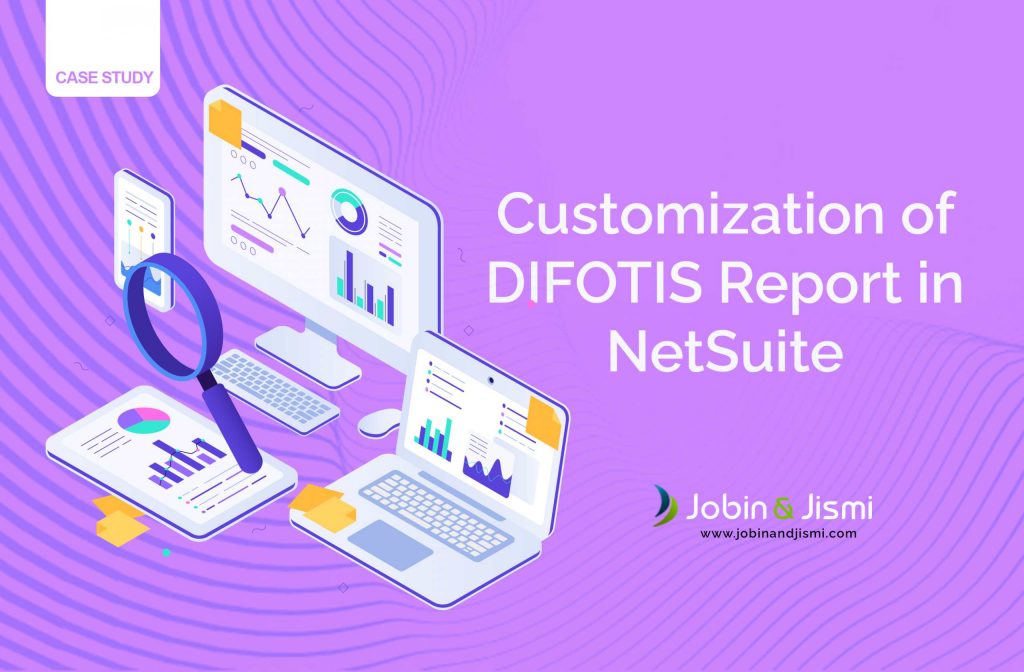Explore the Customization of DIFOTIS Report in NetSuite
One of our global clients is a New Zealand-based cleaning and hygiene systems provider. They had a business system based on DIFOTIS (Delivery in Full on Time in Spec) or OTIF (on-time and in-full). This was for ordering and shipping commodities.
They wanted to measure the length of the process of receiving an order. They receive orders by phone, email and also on a case-by-case basis. These methods directly relate to sales orders.
“What is DIFOT”
DIFOTIS report or OTIF is a measurement of delivery performance and it usually shown as a percentage. It measures how one delivers the expected products within the exact time period in a supply chain. It also checks whether one delivers the correct quantity ordered by the customer at the exact place.
Requirements
The client wanted to show the list of sales orders as a Key Performance Indicator (KPI) for each stage of DIFOTIS report. The KPI contains the details of total sales orders and indicators against each one. They also wanted a Month-to-Date trend graph on their employee’s dashboard.
The best bet is the NetSuite trend graph as it is the alternative to a report. Why? Because it illustrates the differences between KPI data and time.
- To find the total number of sales orders fully fulfilled in the last business day.
- Exclude all sales orders when item name starts with a particular string and include all sales orders with the mixture of that string + other inventory/assembly items.
- They need to subtract a case from the total number of sales orders within a predefined time period of a business day.
- To add time order received.
- Show a month to date trend graph on an employee’s dashboard.
Challenges of customizing DIFOTIS or OTIF report in NetSuite
Our challenge was to create a scalable solution allowing clients to meet significant growth in their business area. While doing this customization our team faced issues with developing a solution which is scalable to the DIFOTIS date. It updates the DIFOTIS date when an item fulfilment is created. Our team deeply analyzed this issue and made changes while developing the solutions.
There were problems when considering the status as ‘Pending billing & billed’ instead of the date of the status change. It was difficult to obtain the number of sales orders in the formula.
Our experts reformulated the formula several times to resolve the issue.
And also the major challenge we faced was to show all the sales orders fully fulfilled on the previous day. Here also our team made an outstanding solution with deep knowledge of NetSuite customization techniques.
Solutions for DIFOTIS report
Jobin & Jismi NetSuite customization developers provided solutions for these requirements mainly with NetSuite saved searches-a powerful tool to fetch data with complex criteria.
Our experts created DIFOTIS report by creating a saved search in NetSuite account. It has several criteria, results and formulas.
In the resulting sales orders, we found some are wrong. Finally, to resolve this issue, our team needs to grasp deep knowledge of NetSuite saved searches and its functioning. We are using these refined results to show KPI scorecard on our client’s dashboard.
Our experts used extra customization techniques for copying various fields. They include DIFOTIS date, out of spec, in spec and DIFOTIS (%) to the KPI.
NetSuite customization techniques reduce the complexity of saved search. They took DIFOTIS date in the saved search and applied additional conditions to meet the exact requirement. To prepare month to trend graph, we ran a saved search with the required date.
Result
The aim of this customization is to show the required search result in a KPI meter. Jobin & Jismi completes this NetSuite customization by using the NetSuite functionalities in an optimized way. We show a detailed list of sales orders as a KPI at each stage of DIFOTIS report or OTIF. And also a month to trend graph on all employee’s dashboard
- Key performance indicators
- KPI trend graph



